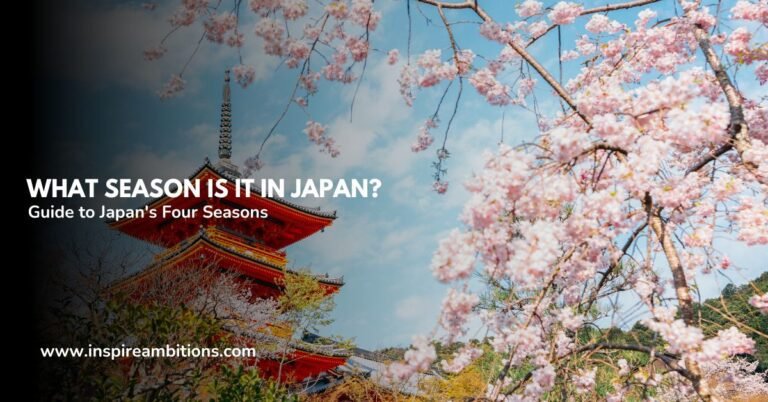Best Time to Ski in Japan – Optimal Dates for Powdery Slopes
Deciding the best time to ski in Japan depends on what you’re looking for in your winter getaway. If chasing the freshest, deepest powder is your priority, the peak months of January and February are a snow seeker’s dream.
During these months, Japan’s ski resorts, especially in Hokkaido, are blanketed in their legendary, light snow—often touted as some of the best powder in the world.
However, consider visiting in early December or late March if you prefer quieter slopes and more relaxed skiing conditions. You’ll find that resorts are less crowded and accommodation prices can be more affordable. While the snow might not be as plentiful as the peak months, there are still plenty of opportunities for enjoyable skiing and snowboarding.
This period might also offer the added benefit of experiencing a blend of good snow conditions and mild weather, which can enhance your overall experience on the slopes.
No matter when you choose to visit, Japan offers a memorable ski season with various experiences for skiers and snowboarders at all levels. It’s important to weigh the factors of snow conditions, crowds, and costs to find the right balance that suits your winter holiday vision.
Optimal Ski Seasons in Japan
Japan offers a variety of ski experiences throughout its winter months, each with unique characteristics. The optimal time to enjoy skiing in Japan largely depends on what you’re looking for in your skiing adventure.
Early Season Delights
December marks the beginning of the ski season in Japan, often characterized by fresh tracks and quieter slopes. Those looking to enjoy the soft powder snow without the crowds can consider traveling during this month. You might find that resorts are less crowded, and you can experience the fresh, crisp air of early winter in Japan.
Peak Winter Excitement
Due to the consistently good snow conditions, January and February are widely accepted as the peak months for skiing in Japan. Expect the finest powder snow, which Japan is famous for, providing an exceptional experience for powder hounds.
During these months, you’re more likely to have access to the best runs and pristine conditions, which are ideal for making those fresh tracks in the snow.
Spring Skiing Advantages
As March rolls in and the season transitions to spring, the snow conditions in Japan remain favorable, with opportunities for excellent skiing extending into abril. During this period, you can enjoy longer days, milder weather, and less crowded slopes.
On top of that, resorts may offer discounted lift passes and lodging, giving you more value for your stay.
Whether you’re looking for the excitement of the peak season or the tranquillity of early and late-season skiing, Japan’s ski resorts cater to all preferences with their distinct seasonal advantages. Timing is critical; choosing the right month to visit can significantly enhance your skiing experience.
Major Ski Destinations and Resorts
When the snow begins to fall, Japan’s top ski destinations beckon with their renowned powder and diverse terrain.
Hokkaido’s Winter Paradise
Niseko is often the highlight of Hokkaido, offering a vast array of snowy slopes, and is frequently referred to as one of the premier worldwide powder destinations. With four interconnected resorts forming Niseko United, you get a seamless skiing experience.
The nearby Rusutsu e Furano resorts are also noteworthy stops on your powder quest, featuring expansive runs and family-friendly activities.
Honshu’s Alpine Appeal
On Japan’s main island, Honshu, o Hakuba Valley presents an impressive collection of resorts, with Hakuba standing out for its Olympic heritage and extensive terrain. Nearby, Nozawa Onsen e Shiga Kogen blend traditional Japanese culture and superb skiing facilities.
Nozawa Onsen is known for its generous snowfall and hot springs, while Shiga Kogen is the largest ski area in Japan, promising long runs and diverse options for skiers of all levels.
Tohoku’s Hidden Gems
While not as internationally famous, Tohoku offers remarkable skiing at places like Zao Onsen. Here, unique ‘snow monsters’ (frozen, snow-covered trees) create a surreal and magical landscape, and the onsen (hot springs) perfectly complement a long day on the slopes.
Japan’s ski resorts, from the powder havens of Hokkaido to the Alpine-like regions of Honshu and the off-the-beaten-path slopes of Tohoku, offer a world-class skiing experience infused with rich culture and stunning scenery.
Whether you’re carving down Niseko’s famed slopes, exploring the vastness of Shiga Kogen, or unwinding in a hot spring after a day at Zao Onsen, the Japanese ski experience is one you don’t want to miss.
Planning Your Ski Trip
When planning your ski trip to Japan, selecting suitable accommodations, understanding cultural experiences, and navigating peak season will significantly enhance your experience.
Accommodations and Lodging
Finding suitable acomodações is critical for a perfect ski holiday. Consider staying at a lodge with natural hot springs, known as onsen, which offer a relaxing experience after a day on the slopes. Sapporo has several lodging options, from traditional ryokans to modern hotels, providing easy access to nearby ski resorts and the city’s vibrant nightlife and restaurants.
- Book early: This is especially true for peak season to secure the best options.
- In-Room Amenities: Look for accommodations with a built-in kitchen to save on dining costs if traveling with family or a group.
10 Essential Tips to Plan Your Japan Ski Trip
Cultural Experiences On and Off the Slopes
Immersing yourself in Japanese culture can be as memorable as the skiing itself. From the Sapporo Snow Festival featuring stunning ice sculptures to savoring local sake, Japan offers an enriching cultural tapestry.
- Festivals: Plan your visit around cultural events for a unique experience.
- Cozinha local: Enjoy authentic Japanese meals at the resort or explore restaurantes in town.
Your preferences for snow conditions and tolerance for crowds can influence the best skiing time.
- Peak Season: Coincides with the best snow conditions, but expect more skiers.
- Spring Skiing: Offers fewer crowds and milder weather, but snow may be less optimal.
- Avoiding Crowds: Consider weekdays and non-holiday periods for quieter slopes.
To experience Japan’s renowned ski conditions with fewer people, you might target periods outside the peak season, such as mid-December or late March.
Engage in these planning steps, and you’re not just organizing another ski trip—crafting an unforgettable winter adventure in Japan.






